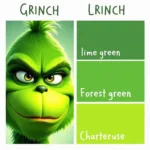When we think of eagles, images of powerful wings soaring against a bright sky often come to mind. But have you ever stopped to consider the details of their plumage, the intricate patterns and colors that adorn their feathers? The question “what color are eagles?” might seem simple at first, but the answer is surprisingly diverse and fascinating.
 Bald Eagle Soaring
Bald Eagle Soaring
Beyond Black and White: Exploring the Spectrum of Eagle Colors
While some eagle species might appear predominantly black or brown from a distance, a closer look reveals a breathtaking range of hues and shades. These colors are not merely decorative; they play crucial roles in the eagle’s survival, from camouflage to communication.
For instance, the iconic Bald Eagle, a symbol of strength and freedom, isn’t actually bald. Its name derives from the striking contrast between its dark brown body feathers and the bright white plumage on its head and tail, which becomes prominent when the bird reaches maturity. This stark contrast is not just visually appealing but also serves as a visual signal for communication among eagles.
 Golden Eagle on Rocky Outcrop
Golden Eagle on Rocky Outcrop
From Golden Hues to Auburn Streaks: Decoding Eagle Plumage
Golden Eagles, as their name suggests, boast a captivating array of golden-brown feathers on their head and neck, contrasting beautifully with their dark brown bodies. This plumage provides excellent camouflage against the rocky, mountainous terrains they inhabit.
Juvenile Bald Eagles, on the other hand, sport a mottled brown and white appearance, providing effective camouflage during their vulnerable early years. As they mature, their plumage transitions to the characteristic white head and tail, marking their readiness for mating and territory establishment.
Other species, such as the Steller’s Sea Eagle, exhibit contrasting black and white patterns, while some, like the Crested Serpent Eagle, showcase stunning auburn streaks and markings on their underparts.
More Than Meets the Eye: The Significance of Eagle Colors
Eagle colors are not random; they have evolved over millennia, driven by natural selection and influenced by factors like habitat, diet, and social behavior.
- Camouflage: Many eagle species, especially juveniles, sport mottled patterns and earthy tones that blend seamlessly with their surroundings, enabling them to ambush prey or avoid detection by predators.
- Communication: The distinctive white head and tail of a mature Bald Eagle serve as visual signals for attracting mates and establishing dominance within their territory.
- Species Recognition: The unique color patterns of different eagle species help them identify their own kind, particularly during breeding season or when competing for resources.
FAQs: Unraveling the Mysteries of Eagle Colors
1. Why do Bald Eagles have white heads?
The white head and tail feathers of a Bald Eagle are not present at birth. They develop gradually as the bird matures and serve as visual signals for attracting mates and asserting dominance.
2. What is the rarest eagle color?
While color variations exist within eagle species, there isn’t a single “rarest” color. The leucistic eagle, with its entirely white plumage due to a genetic condition, is a rare and captivating sight.
3. Do all eagles have the same color vision as humans?
No, eagles have superior color vision compared to humans. They can perceive a wider spectrum of colors, including ultraviolet light, which helps them hunt and navigate with greater precision.
4. Can you tell an eagle’s age by its color?
In some species, like the Bald Eagle, plumage changes with age. Juvenile Bald Eagles have mottled brown and white feathers, while adults sport the iconic white head and tail.
5. Do male and female eagles have different colors?
In most eagle species, there is little to no difference in coloration between males and females. However, slight variations in size and intensity of certain colors might exist.
Need Help with Your Next Color Project?
Color is our passion! Whether you’re inspired by the majestic hues of eagles or seeking the perfect palette for your home, our team at Color Box Hanoi is here to assist you. Contact us at 0373298888 or [email protected], or visit us at 86 Cầu Giấy, Hà Nội. Let us help you bring your color visions to life!

